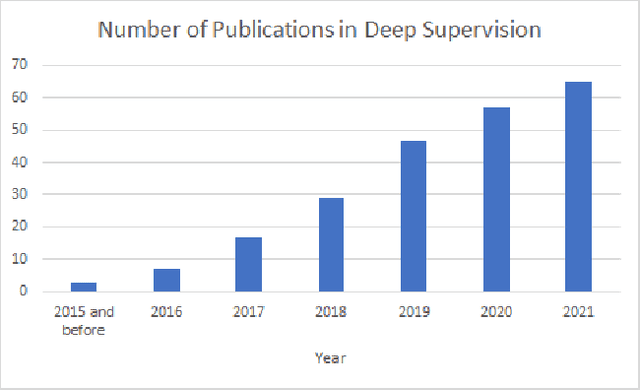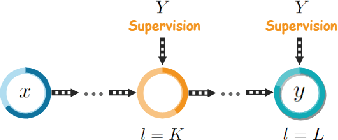Xiaotong Gu
A Comprehensive Review on Deep Supervision: Theories and Applications
Jul 06, 2022



Abstract:Deep supervision, or known as 'intermediate supervision' or 'auxiliary supervision', is to add supervision at hidden layers of a neural network. This technique has been increasingly applied in deep neural network learning systems for various computer vision applications recently. There is a consensus that deep supervision helps improve neural network performance by alleviating the gradient vanishing problem, as one of the many strengths of deep supervision. Besides, in different computer vision applications, deep supervision can be applied in different ways. How to make the most use of deep supervision to improve network performance in different applications has not been thoroughly investigated. In this paper, we provide a comprehensive in-depth review of deep supervision in both theories and applications. We propose a new classification of different deep supervision networks, and discuss advantages and limitations of current deep supervision networks in computer vision applications.
EEG-based Brain-Computer Interfaces : A Survey of Recent Studies on Signal Sensing Technologies and Computational Intelligence Approaches and their Applications
Jan 28, 2020



Abstract:Brain-Computer Interface (BCI) is a powerful communication tool between users and systems, which enhances the capability of the human brain in communicating and interacting with the environment directly. Advances in neuroscience and computer science in the past decades have led to exciting developments in BCI, thereby making BCI a top interdisciplinary research area in computational neuroscience and intelligence. Recent technological advances such as wearable sensing devices, real-time data streaming, machine learning, and deep learning approaches have increased interest in electroencephalographic (EEG) based BCI for translational and healthcare applications. Many people benefit from EEG-based BCIs, which facilitate continuous monitoring of fluctuations in cognitive states under monotonous tasks in the workplace or at home. In this study, we survey the recent literature of EEG signal sensing technologies and computational intelligence approaches in BCI applications, compensated for the gaps in the systematic summary of the past five years (2015-2019). In specific, we first review the current status of BCI and its significant obstacles. Then, we present advanced signal sensing and enhancement technologies to collect and clean EEG signals, respectively. Furthermore, we demonstrate state-of-art computational intelligence techniques, including interpretable fuzzy models, transfer learning, deep learning, and combinations, to monitor, maintain, or track human cognitive states and operating performance in prevalent applications. Finally, we deliver a couple of innovative BCI-inspired healthcare applications and discuss some future research directions in EEG-based BCIs.
 Add to Chrome
Add to Chrome Add to Firefox
Add to Firefox Add to Edge
Add to Edge